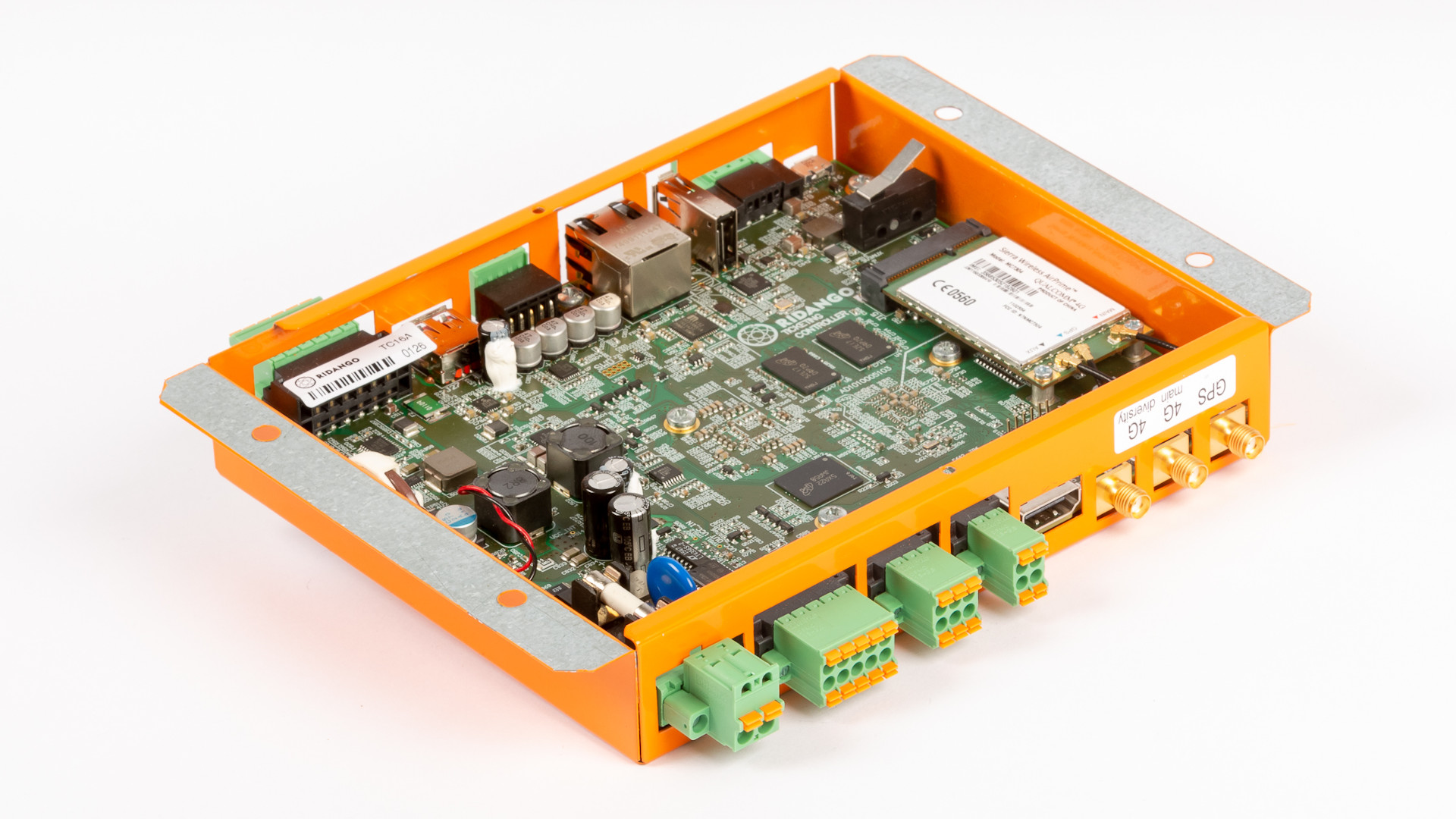PORTFOLIO
Display Controller with Embedded Linux
Industrial controller designed for public transportation systems, seamlessly integrating with ticketing validators. It connects to cloud backend servers via mobile network, ensuring real-time communication and synchronization.
Technologies
- NXP i.MX 6 (ARM Cortex-A)
- Custom Embedded Linux
- C/C++ Languages
- 4G LTE, GPS, Ethernet
- HDMI Display, Audio Speaker

Challenge
Modern public transportation systems – such as buses, trams, and trains – require multiple entry points to accommodate large volumes of passengers. At each of these access points, ticket validators must be installed to allow passengers to validate or purchase tickets upon boarding. These devices must be cost-effective while also supporting advanced connectivity features, including 4G LTE for cloud integration and GPS for real-time location tracking.
In addition to ticketing systems, public transportation vehicles are typically equipped with other electronic devices, including receipt printers, HDMI displays, audio speakers, and internal CAN bus networks for vehicle diagnostics and control. Integrating all these components into a cohesive and manageable system poses a significant engineering challenge.
Solution
To address this complexity, a centralized display controller was developed to serve as the integration hub for the entire onboard system. This controller connects low-cost ticket validators – such as models DV12T and DV15S – or high-end ticket validators with large LCDs – such as DV21R, DV21S, and DV25R – to cloud platforms, enabling centralized data management and remote monitoring.
Beyond ticketing, the display controller provides a range of additional functions. It offers drivers a user interface to enable or disable various subsystems, manage receipt printing, display advertisements or real-time schedules on LCD screens, and control audio announcements for upcoming stops.
The system is powered by an embedded Linux platform, chosen for its robustness, scalability, and support for a modern user experience. It also enables over-the-air (OTA) updates, ensuring that software improvements and security patches can be deployed seamlessly.
The entire solution is enclosed in an industrial-grade housing designed to withstand mobile environments, including exposure to vibrations and electromagnetic interference. This ensures reliable operation in demanding transit applications.

Specifications
Features
4G LTE PCIe modem, GPS, HDMI display, Ethernet connectivity, eMMC storage, DDR3 SDRAM, USB, 2D barcode reader, stereo audio codec, CAN bus communications, I/O extension
Processor
Multicore NXP i.MX 6Quad (ARM Cortex-A) automotive applications processor
Software Platform
C/C++ programming on U-Boot and custom embedded Linux or Android, over-the-air (OTA) updates
Interfaces
HDMI, RMII, USB, SD/MMC, PCIe, CAN, RS-485, RS-232, I2S, SPI, I2C, UART, ADC, PWM, GPIO
Power
9 – 32 V DC power input with overvoltage and reverse polarity protection
Development Tools
Altium Designer, Solid Edge, Visual Studio Code
Impact
The display controller has been successfully deployed across multiple European countries, becoming a core component of thousands of public transportation systems. As a result, it has had a direct impact on the daily journeys of hundreds of thousands – if not millions – of passengers throughout its operational lifespan.
Field data and long-term usage have demonstrated the system’s high reliability, with minimal maintenance requirements and excellent uptime across diverse environmental conditions. Its centralized architecture has simplified fleet-wide updates and diagnostics, significantly reducing the operational overhead for transit operators.
Moreover, by enabling dynamic scheduling, real-time passenger information, and automated stop announcements, the controller has improved the overall passenger experience – making public transport more predictable, accessible, and user-friendly.

About Ridango
Ridango is a global mobility technology group, with a focus on automated fare collection (AFC), payments (cEMV) and real-time information systems. Ridango has successfully executed projects around the world, the product portfolio includes a leading transit management system (incl. CAD / AVL) and a world-class ETA prediction engine.
The company was established in 2009 in Tallinn, the location of their HQ to this day. Ridango best-in-class solutions are being used by more than 120 public transport authorities and the group operates systems in more than 26 countries around the globe.
Contact Ridango for product inquiries, price information and further details.



